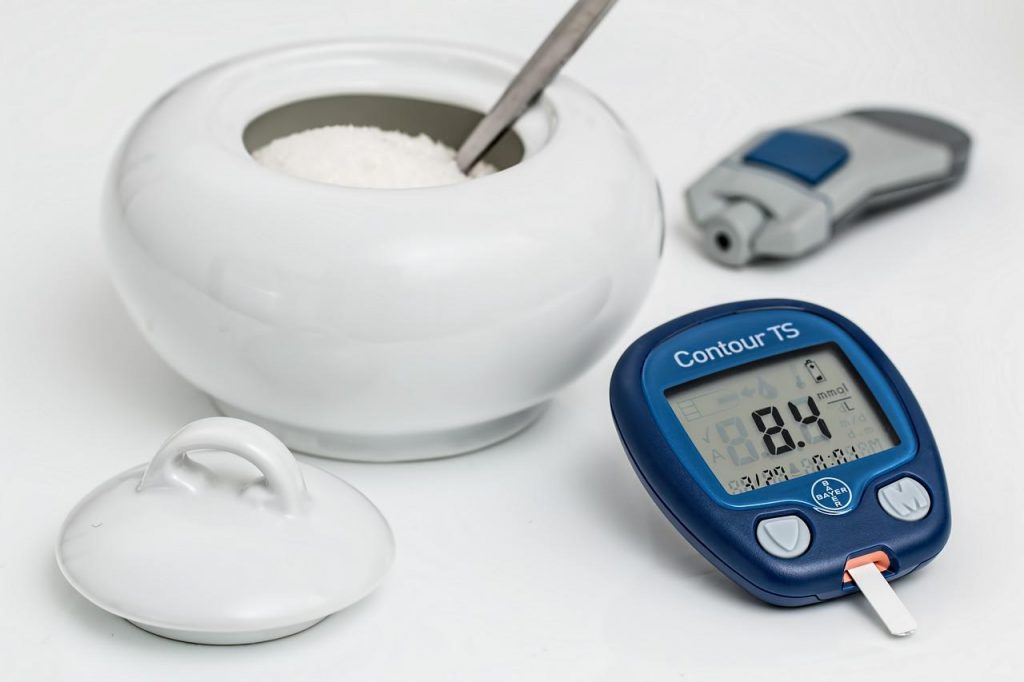 Photo: Hippopx
Photo: HippopxPregnancy brings a myriad of changes within a woman’s body. Among these, some may trigger the onset of gestational diabetes during gestation. This temporary form of diabetes emerges during pregnancy and typically disappears postpartum.
Yet, if left unattended, it can pose significant risks for both mother and child. So it is better to understand the intricacies of gestational diabetes, its origins, symptoms, screening procedures, diagnostic methodologies, treatment modalities, and potential long-term implications.
Understanding gestational diabetes mellitus
 Image by Steve Buissinne from Pixabay
Image by Steve Buissinne from Pixabay Gestational diabetes mellitus (GDM) is defined as any level of glucose intolerance that begins or is first recognised during pregnancy. This arises when pregnancy hormones interfere with the body’s efficient utilisation of insulin—a hormone essential for facilitating the absorption of glucose into cells to generate energy.
In pregnant women without diabetes, the surge in hormonal activity during pregnancy induces insulin resistance, where the body’s cells become less responsive to insulin. Typically, the pancreas compensates by augmenting insulin production, but in some instances, this mechanism falters, resulting in elevated blood sugar levels—a condition termed gestational diabetes.
Normally, hormonal fluctuations peak around the 24-28 week mark of pregnancy, although onset can occur earlier or later. Blood sugar levels generally normalise post-delivery, but women with a history of gestational diabetes face an elevated risk of developing type 2 diabetes later in life.
Causes of gestational diabetes
While the precise aetiology of gestational diabetes remains elusive, several factors are believed to play a role:
- Pregnancy hormones: Hormones, particularly those emanating from the placenta like progesterone, interfere with the body’s ability to use insulin effectively. This insulin resistance increases as pregnancy progresses.
- Family history: Women with a familial predisposition to type 1 or type 2 diabetes are at an increased risk.
- Age: Older pregnant women, especially those over 25, are at higher risk.
- Weight: overweight or obese before pregnancy, more likely to develop gestational diabetes. Extra weight means the body needs more insulin to control your blood sugar levels.
- Race/ethnicity: Certain ethnic groups such as Native American, Hispanic/Latina, African American, Asian, and Pacific Islander women face heightened risks.
- Polycystic ovary syndrome (PCOS): PCOS, characterized by underlying insulin resistance, predisposes individuals to gestational diabetes.
Signs and symptoms of gestational diabetes:
Common indicators of gestational diabetes during pregnancy include:
- Increased thirst: Elevated blood sugar levels prompt excessive urine production, leading to dehydration and heightened thirst.
- Frequent urination: Kidneys work overtime to expel excess glucose, resulting in frequent urination, even at night.
- Fatigue: Inadequate energy supply to cells due to high blood sugar levels can induce fatigue.
- Hunger: The body tries to compensate for high blood sugar by producing more insulin to clear it from the bloodstream. This lowers blood sugar further and triggers hunger.
- Blurred vision: High blood sugar can pull fluid out of the lens of the eye, causing temporary vision disturbances, noticed particularly upon standing.
Screening and diagnosis
All pregnant women undergo gestational diabetes screening between weeks 24-28. The screening involves a one-hour glucose challenge test (GCT test) where blood is drawn one hour after drinking a sugary drink. If the results are higher than normal, the woman will need to undergo a three-hour glucose tolerance test (GTT test) to confirm the diagnosis.
Treatment approaches:
Management of gestational diabetes revolves around maintaining optimal blood sugar levels and mitigating risks for both mother and baby. Treatment modalities typically encompass:
Poorly managed gestational diabetes poses risks for both mother and child, including:
- Blood sugar monitoring: Regular monitoring, especially before and after meals, aids in tracking fluctuations and necessitates treatment adjustments.
- Medical nutrition therapy: Collaborating with a registered dietitian facilitates crafting meal plans conducive to stable blood sugar levels, emphasising healthy carbohydrate choices and portion control.
- Physical activity: Incorporating 30 minutes of moderate exercise daily, such as walking, assists in blood sugar regulation and managing weight gain, contingent upon obstetrician approval.
- Medication: Insulin injections may be prescribed if lifestyle modifications prove insufficient in controlling blood sugar levels.
- Foetal monitoring: Non-stress tests and ultrasounds are done periodically to check foetal growth and health as gestational diabetes can increase the baby’s size.
Risks associated with gestational diabetes
For the mother:
- Preeclampsia: Characterised by elevated blood pressure during pregnancy, posing grave health risks.
- Cesarean delivery: Increased likelihood due to fetal overgrowth stemming from elevated blood sugar levels.
- Future diabetes: A substantial proportion of women with gestational diabetes develop type 2 diabetes within 10-20 years postpartum.
For the baby:
- Large birth weight (macrosomia): Babies are at risk of weighing over 1.8 kg at birth, increasing delivery difficulties.
- Hypoglycemia post-birth: Elevated insulin exposure in the uterus may result in low blood sugar levels in newborns.
- Respiratory issues: Large babies face higher risks of encountering shoulder dystocia and birth canal obstructions.
- Jaundice: Excessive bilirubin levels are more common in large babies.
Mitigating risks through lifestyle modifications
While gestational diabetes may not be entirely preventable, certain lifestyle adjustments can lower the risks, particularly for individuals predisposed to the condition:
- Attain and maintain a healthy pre-pregnancy weight through diet and exercise.
- Adopt a balanced diet replete with whole grains, fruits, vegetables, lean proteins, and low-fat dairy.
- Engage in regular physical activity, adhering to a regimen approved by healthcare providers.
- Abstain from smoking and limit alcohol consumption, especially if planning pregnancy.
- Seek preconception counselling to address existing health conditions and optimise pre-pregnancy health.
- Prioritise adequate rest and implement stress management techniques to promote well-being.
- Consider diabetic screening preemptively, especially with a family history of diabetes.
In conclusion, gestational diabetes arises from hormonal fluctuations and insulin resistance during pregnancy. Timely screening, vigilant monitoring, and tailored treatment are pivotal in mitigating risks and ensuring favourable outcomes for both mother and baby. With proactive management, maternal and fetal health can be safeguarded throughout the pregnancy journey.
.png)
 1 week ago
63
1 week ago
63








 English (US) ·
English (US) ·